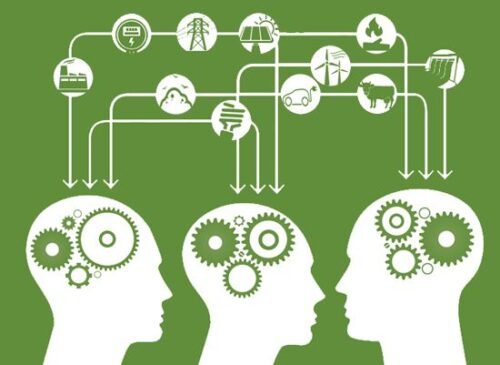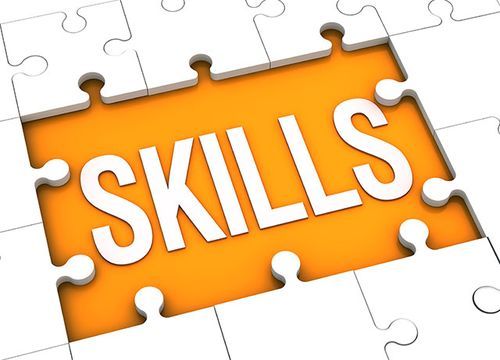Proficiency in the English language is an indispensable requirement for engineering professionals due to various reasons. Firstly, engineers must articulate intricate technical information and ideas to their colleagues, clients, and stakeholders, necessitating an elevated level of English proficiency for effective communication.
Secondly, engineers must document their work in manuals, reports, and presentations. Such documents need to be comprehensible and lucid, making clear and concise English writing indispensable.
Thirdly, engineering is a global profession, with English serving as the universal language of communication. Effective English communication facilitates international collaborations, thereby expanding professional horizons. Fourthly, scientific research and innovation are predominantly documented in the English language. Consequently, engineers must possess the capacity to read, write, and comprehend technical publications and research papers.
Lastly, English proficiency provides a competitive advantage in the job market. Multinational organizations frequently require a high degree of English proficiency as a prerequisite for employment, allowing proficient engineers to access global employment opportunities.
To help you, here are some English vocabulary for engineers that will come in handy during your future career or studies.
50 English Vocabulary Terms for Engineers with Definitions and Examples

- Acceleration – the rate at which an object changes its velocity over time.
Example: The car’s acceleration from 0 to 60 miles per hour was measured at 7 seconds.
- Actuator – a component of a control system that converts an electrical signal into mechanical motion.
Example: The actuator was responsible for moving the robot’s arm in response to a user command.
3. Algorithm – a set of instructions or rules that a computer program follows to complete a task.
Example: The algorithm was designed to sort a large amount of data into different categories.
- Amplifier – a device that increases the power of an electrical signal.
Example: The amplifier was used to boost the sound signal in a speaker system.
- Antenna – a device that is used to send or receive radio signals.
Example: The antenna was mounted on the roof to improve the quality of the radio signal.
- CAD (Computer-Aided Design) – a software system used by engineers to create 3D models of parts and assemblies.
Example: The engineer used CAD to design a new prototype of a car engine.
- Calibration – the process of adjusting and checking the accuracy of a measuring device.
Example: The technician performed a calibration on the pressure sensor to ensure its accuracy.
- Circuit – a closed loop of conductive material that allows electrical current to flow.
Example: The circuit board contained multiple circuits that controlled different functions of the electronic device.
- Compression – the process of reducing the volume of a gas or fluid.
Example: The compressor was used to compress air for a pneumatic system.
- Controller – a device that manages and regulates the operation of a system.
Example: The temperature controller was responsible for maintaining a consistent temperature in the room.
- Convection – the transfer of heat through the movement of a fluid or gas.
Example: The engineer studied the convection of air in a room to determine the most effective placement of air conditioning vents.
- Coupling – a device used to connect two parts or components of a system.
Example: The motor was connected to the gearbox with a coupling to transfer power from the motor to the wheels.
- Diode – a semiconductor device that allows current to flow in only one direction.
Example: The diode was used to protect the circuit from voltage spikes and reverse current.
- Electromagnetism – the study of the interaction between electric and magnetic fields.
Example: The engineer used electromagnetism to design an electric motor.
- Finite Element Analysis (FEA) – a computer-based method used to analyze the behavior of a structure or component under various loads and conditions.
Example: The engineer used FEA to simulate the impact of different forces on the suspension system of a car.
- Fluid mechanics – the study of the behavior of fluids in motion.
Example: The engineer studied fluid mechanics to design a more efficient water pump.
- Gearbox – a mechanical device used to change the speed and torque of a rotating shaft.
Example: The gearbox was used to change the speed of the car’s wheels based on the engine’s RPM.
- Heat exchanger – a device used to transfer heat between two fluids.
Example: The heat exchanger was used to cool the engine coolant in a car.
- Hertz (Hz) – a unit of measurement for frequency.
Example: The frequency of the AC power supply was measured at 50 Hz.
- Hydraulics – the study of the behavior of fluids under pressure.
Example: The engineer used hydraulics to design a hydraulic lift system for heavy machinery.
- Insulation – a material used to reduce the flow of heat or electricity.
Example: The insulation was applied to the walls of the building to reduce energy loss and improve energy efficiency.
- Kinematics – the study of the motion of objects without considering the forces that cause the motion.
Example: The engineer used kinematics to design the motion of the robot’s arm.
- Laser – a device that emits a narrow beam of light that can be used for cutting, welding, or measuring.
Example: The engineer used a laser cutter to precisely cut the parts for a prototype.
- Load cell – a device used to measure force or weight.
Example: The load cell was used to measure the weight of the object on the conveyor belt.
- Lubrication – the process of applying a substance to reduce friction between moving parts.
Example: The lubrication system was responsible for keeping the engine running smoothly.
- Machine learning – a type of artificial intelligence that allows computers to learn from data and improve performance on a specific task.
Example: The engineer used machine learning algorithms to improve the accuracy of a prediction model.
- Manufacturing – the process of producing goods using machines, tools, and labor.
Example: The manufacturing plant produced thousands of car engines every day.
- Material properties – the characteristics of a material that determine its behavior under different conditions.
Example: The engineer studied the material properties of steel to determine its strength and durability.
- Mechatronics – a multidisciplinary field that combines mechanical, electrical, and computer engineering.
Example: The engineer used mechatronics principles to design a robotic arm that could perform precise movements.
- Microcontroller – a small computer chip that can be programmed to control the behavior of a system.
Example: The microcontroller was used to control the temperature of the greenhouse.
- Nanotechnology – the study of materials and devices on a microscopic scale.
Example: The engineer used nanotechnology to design a material that could detect and respond to changes in the environment.
- Optics – the study of light and its behavior.
Example: The engineer used optics to design a lens system for a camera.
- PID (Proportional-Integral-Derivative) controller – a type of feedback control system that adjusts the output based on the difference between the desired and actual values.
Example: The PID controller was used to maintain a constant speed of the motor.
- Power electronics – the study of the behavior of electrical power under different conditions.
Example: The engineer used power electronics to design a more efficient power supply for a computer.
- Pressure sensor – a device used to measure the pressure of a gas or fluid.
Example: The pressure sensor was used to monitor the pressure of the hydraulic system.
- Quality control – the process of ensuring that products meet the desired quality standards.
Example: The quality control team inspected the products before they were shipped to customers.
- Resonance – the tendency of a system to oscillate at a particular frequency.
Example: The engineer studied the resonance of a bridge to prevent it from collapsing due to wind or vibrations.
- Robotics – the study of robots and their behavior.
Example: The engineer used robotics to design a robot that could navigate through an environment and perform tasks.
- Servo motor – a type of motor that can be controlled with high precision.
Example: The servo motor was used to control the position of the robot’s arm.
- Signal processing – the study of how to extract useful information from signals.
Example: The engineer used signal processing techniques to analyze the data from a sensor.
- Simulation – the process of using a computer model to simulate the behavior of a system.
Example: The engineer used a simulation to predict the behavior of a car in a crash.
- Solenoid – a device that converts electrical energy into mechanical motion.
Example: The solenoid was used to control the movement of a valve in the hydraulic system.
- Strain – the deformation of a material under stress.
Example: The engineer measured the strain in a bridge to ensure it could support the weight of traffic.
- System design – the process of designing a complex system that meets specific requirements.
Example: The engineer used system design principles to create a transportation system for a city.
- Thermal conductivity – the ability of a material to conduct heat.
Example: The engineer studied the thermal conductivity of a material to determine its suitability for use in a heat exchanger.
- Transducer – a device that converts one form of energy into another.
Example: The transducer was used to convert the pressure of a fluid into an electrical signal.
- Vector – a quantity that has both magnitude and direction.
Example: The engineer used vectors to describe the forces acting on a structure.
- Voltage regulator – a device that maintains a constant voltage in a circuit.
Example: The voltage regulator was used to ensure that the voltage supplied to the electronics was stable.
- Welding – the process of joining two materials by heating them to a high temperature and causing them to fuse together.
Example: The engineer used welding to join the metal parts of a structure together.
- Yaw – the rotation of an object around a vertical axis.
Example: The engineer studied the yaw of a plane to ensure it could maintain stable flight.
Conclusion



In conclusion, it is evident that mastering the English language is of paramount importance for engineers in today’s globalized world. The ability to communicate effectively, document technical information, and collaborate with colleagues from diverse backgrounds is crucial for the advancement of engineering knowledge and the successful execution of complex projects. international exchanges and collaborations, fostering a global community of engineers working together towards common goals.
English proficiency enables engineers to access a vast array of scientific research and innovation, expanding their intellectual horizons and contributing to the cutting-edge advancements in their respective fields.
Furthermore, the mastery of English facilitates. However, it is important to recognize that the significance of English proficiency in engineering should not overshadow the importance of multilingualism and the preservation of diverse linguistic and cultural heritage. The engineering community should actively strive to create an inclusive and equitable environment that values and appreciates linguistic diversity, ensuring equal opportunities for engineers from different linguistic backgrounds to contribute their unique perspectives and expertise.
Ultimately, the mastery of English, alongside a strong foundation in scientific principles and technical skills, empowers engineers to navigate the global landscape, effectively communicate their ideas, and contribute to solving the pressing challenges of our time. It is through the synergy of language, knowledge, and collaboration that engineering can truly transcend boundaries and create a positive impact on society.
So now that you master this terminology, here’s a multiple choice quiz on the English vocabulary for engineers to test your knowledge.
Multiple Choice Quiz on English Vocabulary for Engineers
Don’t hesitate to suggest new words and terms that you think we should include in our list.
At Break Into English our native teachers are trained to prepare specialized content for 1 to 1 classes by Skype, Teams, Zoom or Google Meet. If you are an engineer and need specialized training in English, sign up to our free trial lesson and test our method!








